Call today to schedule a Free Estimate and Crawlspace Inspection
(757) 552-0120

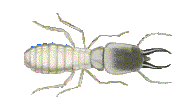
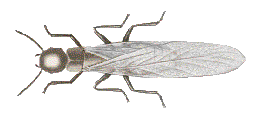
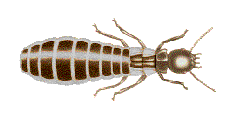
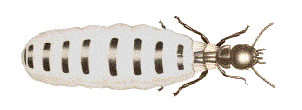
Worker Termite Soldier Termite Swarmer/Reproductive King Termite Queen Termite
FACTS
Subterianian termites
require two things to survive:Food (wood or other cellulose material) and consistent source of moisture.Subterianian termites can consume over 15 pounds of wood in a single week.
Subterianian termites can create secondary nests above the ground called "secondary colonies". These independent nests may survive independently of the ground if a water source is available. Common interior water sources include; roof leaks, plumbing leaks, leaky showers or tubs, toilet leaks, etc... Aerial infestations must be located for effective control.
subterianian termites die rather quickly from dehydration when exposed to the environment due to their thin exo-skeleton. To maintain the needed humidity and protect them from predators they build protective mud tubes and remain unseen most of the time.
Subterianian termites: produce a chemical odor called a pheromone, which other termites, in the colony follow to find food and water.
Two Types of Termite
|
DRYWOOD TERMITES SUBTERIANIAN TERMITES | ||
|
FOOD |
CELLULOSE (derived from wood and wood based products.) |
CELLULOSE (derived from wood and wood based products.) |
|
MOISTURE |
No outside moisture needed. Can survive on a small amount of moisture within wood. |
Require an outside moisture source. This may be from the soil, leaky plumbing, roof tops, etc... |
|
ENVIRONMENT |
Colonies live within the wood and do not require contact with the soil. |
Normally live and forage in the soil. Can establish a nest above the soil if an acceptable moisture source is found. Build protective mud tubes that lead from the soil to the home. Can move colony within soil when environmental conditions require. |
|
COLONY SIZE |
SMALL (few hundred to a thousand termite members.) |
LARGE (A well established colony may contain over 7 million termites. Some species have numerous smaller colonies of several thousand termite members.) |
|
EVIDENCE OF |
"Sand-Like" pellets or "droppings". Kick-out holes on the walls, ceilings or wood. Infestation may take two years before evidence of droppings is present. |
1) Mud Tubes ascending from the ground to the structure or protruding from walls and/or trim. |
|
PREVENTIVE |
1) Use treated lumber during construction. |
1) Install a termite monitoring or detection system at the home or structure. |
|
CONTROL |
Light Activity: |
**Prevention through education, detection and elimination of conducive conditions are the most effective and cost efficient control measures. When activity is already present, treat the structure with a liquid termiticide. |
|
DAMAGE LEVEL |
Minimal* |
Some species of subterranean termites can consume 15 pounds of wood per week. |
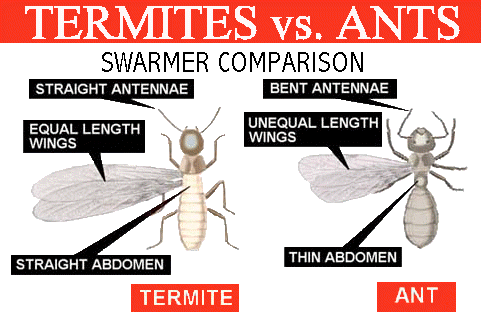
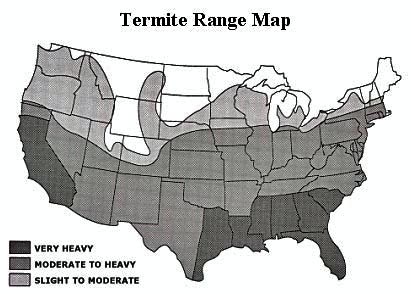
Call today to schedule a Free Estimate and Crawlspace Inspection
(757) 552-0120
or